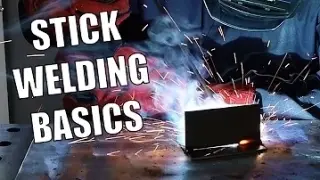The welding industry is evolving, and with the knowledge of global standards for Smaw Welding, the manufacturers and technicians would have the edge. Shielded Metal Arc Welding (Smaw) has been recognized as the root process for welding since it is widely used in many domains for its flexibility and efficiency. Compliance with international standards assures that the quality, safety, and performance of Smaw Welding processes will meet the expectations of modern applications. This blog is intended to review these standards in-depth for the importance of these standards asserts the excellence needed in executing welding projects worldwide.
At TAIZHOU YIKE MACHINERY CO., LTD, we manufacture inverter welding machines around these standards. Our company is located at Xiayangzhang, Daxi Town, Wenling City, Zhejiang, China. Given our strategic location near Taizhou airport as well as the ports of Ningbo and Shanghai, we can efficiently service a wide variety of clients. We pride ourselves on our ability to maintain a good price versus high quality and help our customers win in Smaw Welding and fulfill the industry's heavy demands. Now we will take you through the very Smaw Welding standards and its implications for the welders all over the world.

SMAW stands for Shielded Metal Arc Welding. It is one of the widely adapted processes of welding versatility and efficiency for different kinds of applications. This process uses a consumable electrode that is coated with flux creating a shielding gas to hold the weld pool from being contaminated by atmospheric air. The simplicity of equipment and portability, makes it very attractive to field work and construction. Given the timely events in SMAW, the most recent partnership activities are still relevant external efforts to recognize welding excellence in the industry. Manufacturers and industry leaders join hands to improve equipment quality which would be complemented with better training of welders. These strive only emphasize the importance of global standards which would equip welders applicable skills for achieving excellent results. As SMAW processes broaden beyond the above-mentioned features, innovations must continue to remain collaterally driven. Newness in innovations will keep driving excellence through collaborative efforts in welding.
SMAW (Shielded Metal Arc Welding) is widely known as a welding method with great benefits for any industry. Very versatile, it can be employed in diverse applications ranging from construction to manufacturing. Because SMAW can be performed in various environments, including outside and in the presence of wind, it has become a popular choice for numerous programs and projects.
A leading maker of welding equipment in partnership with a large industrial company showcases fresh advances in SMAW technology. Therefore, this cooperation desires to set welding into practice for higher-quality outputs and more efficient production process. Such projects indicate SMAW's importance in enhancing productivity while maintaining welding excellence at all levels, improving the automotive, aerospace, and infrastructure development industries.
Global standards for Shielded Metal Arc Welding (SMAW) ensure welding quality and uniformity in practice. With the huge growth projected in the welding electrodes market, with a valuation nearing $4.46 billion by the year 2032, conformity to these standards gains further importance. Partnerships in the industry, forging collaboration between manufacturers and suppliers, are essential to enhance welding excellence and push latest technologies.
The combination of gas-shielded flux-cored arc welding with SMAW and other recent developments in welding processes continue to address the demand for reliable and cost-effective procedures. Training programs offered throughout various recognized institutions prepare the next generation of welders capable of conforming to global standards. With a greater number of people acquiring practical skills in welding, the industry can now afford sustainable growth with improved output quality.
In recent times, the welding sector has become a highly competitive arena in which one must understand the pertinent and crucial equipment and materials required for Shielded Metal Arc Welding (SMAW): the process. SMAW is known to provide versatility and portability while stringently relying on certain consumables, such as electrodes and protective gear. This therefore means that the right choice of electrodes should be very important because they will highly decide the level of quality in a weld as well as the overall performance. The high cost that hasn't disappointed promising-seeming recent developments in welding technology indicates seriously high-quality materials to meet international standards.
By 2032, the global market for welding electrodes is likely to be worth USD 4.46 billion. This is indicative of the much-increased activity necessitating superior welders in practically every sector, especially oil and gas. In this case, the professional training workshops are generally set up in compliance with established designations, such as those of the American Welding Society (AWS), which ensure that the professional welders are capable of attaining the theoretical aspects and practice of welding for success in the profession. As industries advance, it becomes important to understand the new SMAW equipment and materials to have reliable, high-quality welds.
Exceptional welding skills stand relevant to excellence in Shielded Metal Arc Welding (SMAW) in today's highly competitive scenario. Recent collaboration among leading manufacturing persons suggests another sign toward the trend improvement of welding techniques and training. Continuous learning culture, therefore, can become a primary tool for a welder to adapt to the industry's dynamic demands and raise personal ability standards.
Such specialized training programs follow international standards, mostly those of the American Welding Society and the American Petroleum Institute. These initiatives address requirements for more stringent safety and quality standards and also teach new engineering techniques, such as combining FCAW and SMAW processes, making the combination reliable and economical, moving the sector towards more efficiency and excellence.
In Shielded Metal Arc Welding (SMAW), safe practices and regulations are of utmost importance for a safe working environment. With their evolution, industries have recognized the training of employees to meet safety standards across the world. Consequently, safety equipment, including helmets and gloves, is now promoted in companies, greatly minimizing injuries and enhancing the culture of safety among welders.
In the light of recent joint ventures in the welding section, such as leading manufacturers' mergers among themselves, it cannot be underscored enough that innovation in safety practices has been a priority for any company. These joint ventures are aimed at the ultimate achievement of standards, both equipment and safety protocol. The welding industry can accomplish its mission of creating not only its operational excellence but also a safer working environment for everybody involved in SMAW welding through automation and regular training.
Shielded Metal Arc Welding (SMAW) entails an exceptional amount of challenges that have to be passed across by welders for them to be called masters of the trade. One of the major hurdles is standardization of its practices at the international level, especially in accordance with the American Welding Society standards. Recently held training sessions like the one imparting specialized welding training to 160 nationals of Uganda rightly put the emphasis on the observance of these standards. This not only serves to raise the quality of workmanship produced, but also increases the marketability of the skilled-welder product in oil and gas circles.
On the other hand, productive partnerships between training institutions and industry promote the development of customizable programs that address specific needs for training in SMAW welding. For instance, the Kenjgewin Teg Trades and Skill Centre is now an approved SMAW test site, allowing students to put their skills to practice in an environment controlled. Such initiatives reinforce the essence of practical training and certification in addressing the problems of the welding industry with the desirable outcome being to betterment of prospects for budding welders.
Training and certification has become a concern with quality welding in the oil and gas industry. Recently, 160 Ugandans got special training in welding according to international standards as set down by the major welding organizations. This helps these welders get a job but also ensures that the local works become global best practices in weld quality.
Advancements in welding techniques such as the combination of the shielded metal arc welding (SMAW) synergy and other techniques show outstanding reliability and cost innovation. Local welding equipment manufacturers in partnership with industry players practice excellence and indicate the need to improve weld quality necessary for critical infrastructure developments. Recently accredited certified test sites, such as those in Canada, open up opportunities for further skills validation for welders while growing the industry.
It is essential to be cautious about upcoming trends in SMAW standards, as the demand for skilled welders is high in various places worldwide. Recent training programs for Ugandan welders have focused on conforming to international standards set by recognized institutions, which translates into better skills for the workforce but really imply a much higher degree of quality and safety for industries that include oil and gas and which play a significant role in economic development.
The developments in welding technologies are also affecting the SMAW operations. The efforts from manufacturing firms to see that the welding equipment and consumables are really working together will go in some way toward efficiency and sustainability of welding processes. As the industries evolve with these standards, developments in arc welding methods and consumables may set new standards for a highly skilled and much more flexible workforce to cope with the challenges in times to come in the world of welding.
A reality of the world where welding is; the understanding of global standards in Shielded Metal Arc Welding (SMAW) is important for perfection in practice. The successful application of such standards always brings the ideal results from welds into structures applied throughout various industries. Case studies detailing successful SMAW applications reveal best practices and novel techniques to achieve a greater performance and safety profile in welding operations.
A good example is the one-time alliance of the leading welding equipment manufacturer with one of the most successful players in the metals sector. The aim of this partnership is to improve each of their companies' welding capabilities using advanced technologies and materials. As they share expertise and resources, both organizations will also set a standard against which others in country will measure quality and efficiency in SMAW practices. Indeed, this will eventually help their joint effort with respect to their nonprofit stature; it could gain ground in the setting of industry standards for excellence in welding.
SMAW stands for Shielded Metal Arc Welding, a process that uses an electric arc between a covered metal electrode and the workpiece to create a weld.
Safety regulations are crucial in SMAW welding to ensure a secure working environment, minimize the risk of injuries, and promote a culture of safety among welders.
Recommended safety gear for SMAW welding includes helmets, gloves, and other protective equipment to safeguard against potential hazards.
Training enhances adherence to international welding standards and improves safety practices, enabling welders to produce high-quality work and maintain a safe working environment.
Partnerships among manufacturers and training institutions focus on improving equipment quality and safety protocols, facilitating the integration of advanced technologies and training initiatives for a safer welding industry.
Certification ensures that welders meet international standards, enhancing weld quality and increasing employability, particularly in industries such as oil and gas.
Recent initiatives include specialized training programs that have equipped hundreds of welders in Uganda with skills aligned with international standards, thus boosting their employability and skill levels.
Practical training is vital for developing and validating welding skills, allowing aspiring welders to apply their knowledge in controlled environments and prepare for industry demands.
Advancements in welding techniques, especially the combination of SMAW with other methods, lead to improved reliability, cost-effectiveness, and enhanced weld quality for critical infrastructure projects.
Certified testing sites provide a platform for welders to validate their competencies, ensuring that their skills meet industry standards and contribute to overall growth in the welding field.

